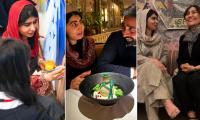and had been living in Lahore for the last a few months. However, the fact that the same group – Jamaatul Ahraar - has successfully conducted three more suicide bombings in Lahore ever since the beginning of 2015 - simply belies the claims of the security agencies about busting the group and smashing its network.
As a matter of fact, those investigating the Wagah border post suicide attack, the Police Lines bombing and the church attacks have concluded that they were carried out by the Jamaatul Ahraar with the help of its support network in Lahore. However, they have not been able to unearth the clandestine network of the Jihadi group so far which is giving sleepless nights to the high-ups of the law enforcement agencies, especially after the church bombings in the Yohnaabad area. The most worrying aspect is that the JuA continues to strike at the heart of Punjab despite the fact that its central leadership is on the run and Khorasani is operating from across the border in the Nangarhar province of Afghanistan. Twin attacks on churches in Lahore indicate that the JuA has apparently decided to strike on the soft targets such as places of worship as hard security targets have become more difficult to attack.
Terrorist activities in Lahore are not only worrisome for the security agencies but they also pose a serious challenge to the ruling Sharif brothers who had been pursuing peace talks with the Tehreek-e-Taliban Pakistan before agreeing with the khaki leadership to launch the military operation in North Waziristan. Interestingly, the JuA ameer Omar Khalid Khorasani’s claim to fame is the February 2014 slaughter of 23 Jawans of the Frontier Corps in a bid to spoil the TTP’s peace talks with the Sharif government. He is a journalist-turned-jehadi whose declared objectives as a staunch follower of al-Qaeda founder Osama bin Laden are to overthrow the government of Pakistan, impose Islamic Shariah in the country, seize the country’s nuclear weapons and wage Jihad to establish the Caliphate.
Before launching his own faction of the JuA in August 2014, Omar Khalid Khorasani was the ameer of the Mohmand Agency chapter of the TTP. He had discarded the TTP umbrella after developing differences with Hakeemullah Mehsud’s successor, Mullah Fazlullah. But the Operation Zarb-e-Azb and the renewed vigour of the security forces in fighting terrorism after the Army School massacre in Peshawar compelled Khorasani and Fazlullah to rejoin hands last week under the TTP umbrella. The announcement of the re-unification of the two groups was made on March 12, 2015 by Ehsanullah Ehsan, the JuA spokesman. Both Khorasani and Fazlullah seem to have realised that it would be easier for the security establishment to eradicate them out if they continue to exist in isolated fragments rather than in a unified chain of jihadis under a cohesive leadership. And the March 15 twin suicide attacks targeting two churches in Lahore were carried out under Omar Khorasani’s instructions hardly 48 hours after the re-merger of his JuA in the TTP.
One of the most effective and powerful founding members of the TTP from the tribal belt, the real name of Omar Khorasani is Abdul Wali. Considered close to al-Qaeda’s fugitive leadership, Khorasani takes pride in having provided sanctuary to Ayman al Zawahiri in the past. In a video interview on June 6, 2011, he described Zawahiri as the supreme leader of the Pakistani Taliban, although the latter had not yet been named as Osama’s successor by that time. Coming from the Safi tribe of Mohmand, Khorasani first shot to prominence at the time of Lal Masjid operation in Islamabad [in 2007] when he forcefully occupied a mosque and an adjacent shrine in Lakaro Tehsil of Mohmand and announced to continue the mission of Maulana Abdur Rashid Ghazi. It was on July 28, 2007 that his militants took over the Jamia Masjid Ghaziabad Lakaro and renamed the mosque as ‘Lal Masjid’. They also seized the adjacent shrine of Haji Turangzai, a known anti-colonialist freedom fighter, and renamed it as ‘Jamia Hafsa Umme Hassan’. Speaking on the occasion, Khorasani said he would continue the mission of Maulana Ghazi.
A year later, Khalid Khorasani became the dominant Taliban commander in Mohmand Agency after defeating the Shah Khalid group (also known as Shah Sahib group), a rival pro-Taliban jihadi group associated with the Lashkar-e-Taiba. Earlier, in May 2008, he signed a peace deal with the Pakistani authorities which required him to renounce attacks on the Pakistani security forces. Under the deal, both sides exchanged prisoners. But as a result of the deal, Khorasani quickly established a parallel government in the Mohmand Agency. Subsequently, polio vaccination was stopped, Shariah courts were established, women were directed to wear the veil in public and criminals were arrested and judged in Sharia courts.
Khorasani had been deeply active in the propaganda machine of the Tehrik-i-Taliban since the death of Osama bin Laden in May 2011, being a vocal supporter of al-Qaeda. As things stand, one of the major security challenges confronted by the security agencies is to unearth the clandestine terrorist network of the Jamaatul Ahraar which has created havoc in the heart of Punjab.







